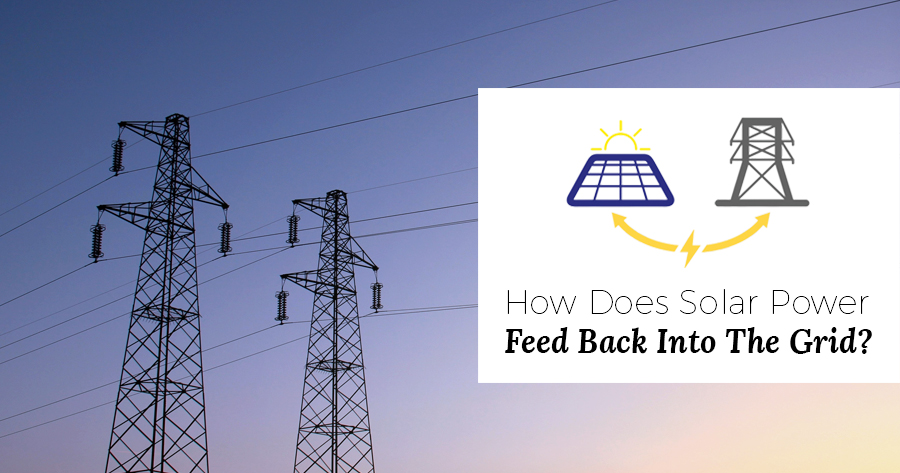How Does Your Solar Power Feed Back Into The Grid?

If you’re considering investing in a solar PV system for your home, you may be wondering how it’s possible for your system to feedback unused solar electricity into the grid.
To begin, we’ll first look at how a solar PV system works.
How A Solar PV System Works
Solar PV Systems work by producing electricity via a solar array. The sunlight that hits your panels is converted into DC electricity, which is fed into an inverter.
This inverter converts the DC electricity produced by your solar array into AC electricity, which is suitable for household consumption. Your inverter should be installed as close as possible to your electricity meter in order to avoid power losses, although having it stored in a cool place like a garage should be your highest priority.
Most systems sold in Australia are connected to the electricity grid and therefore require a ‘grid feed’ (or ‘grid tie’) inverter. In a grid feed system, electricity produced by your solar system will supply your home and its appliances first, and only feed electricity into the grid if there is any surplus electricity.
Likewise, if your solar system does not produce enough electricity to power your home, any excess electricity will be drawn from the grid.
If your system has been sized correctly, very little power should be fed into the grid, with most being consumed, and thus offsetting what you previously would have purchased from the grid.
Your Inverter: A More In-Depth Look
Any unused or surplus solar electricity will be exported to the grid. To do this, your inverter must continually monitor the grid, adjusting your solar electricity to mirror any fluctuations, in order to allow any excess solar electricity to seamlessly flow from your solar PV system to the grid.
If the grid goes dead or varies from standard specifications, your inverter will automatically shut itself off, unless you have a battery backup which has been configured in a specific set up.
Your solar PV system will automatically shut itself off if the grid goes down because it may try to send power back into the grid. Anyone performing electric work or upgrades on the grid (which is expected to be off) may be electrocuted and seriously injured by the electricity you’re feeding back into the grid. When the power cut is over, your inverter will either automatically switch back on, or require a manual start.
All solar inverters supplied by Infinite Energy are grid feed inverters.
What Do I Receive For My Exported Solar Electricity?
While you won’t receive cash for your exported solar electricity, you will receive a credit on your electricity bill. This is called a feed-in tariff (FiT) and in Australia, the amount you will receive will vary state-to-state, and also depending on other factors such as when you installed your solar and the time of energy generation.
While this may seem little, as we’ve explored in previous blogs, the value of solar should be placed in the savings generated by the amount of electricity you’re displacing from the grid, not from the feed-in tariff you’ll receive.
As your solar provider, Infinite Energy can apply for the feed-in tariff on your behalf, making the entire solar process as seamless as possible.
To learn more about solar for your home, request a no-obligation callback by clicking here.
Information correct as of September 2020


